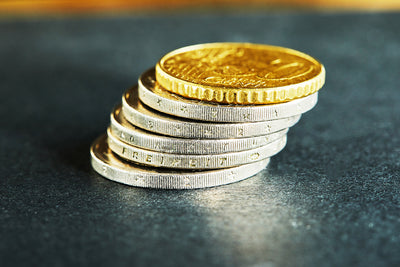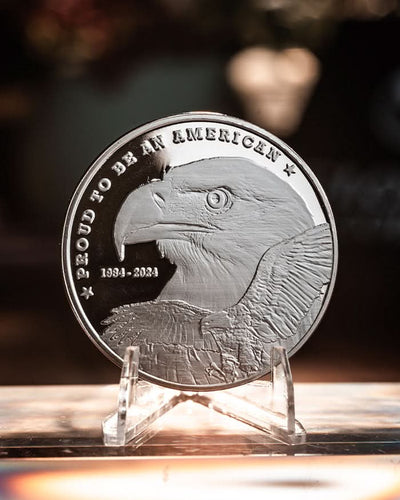Britannia Coins: A Numismatic Journey Through Time and Value
As a modern numismatic coin dealer known as “coindealerguy” on X, I’ve built my career sourcing and selling high-quality bullion coins, from American Eagles to Canadian Maple Leafs. But few coins capture my imagination like Britannia coins. These British gold and silver bullion coins, minted by the Royal Mint, are a perfect blend of investment potential, historical significance, artistic beauty, and serve as a powerful national symbol. Whether you’re an investor hedging against inflation or a collector chasing rare varieties, Britannia coins offer something special. In this comprehensive guide, I’ll walk you through their history, design, value, collecting tips, and the exciting developments for 2025, sharing insights from my years in the trade. Let’s dive into why Britannia coins are a cornerstone of modern numismatics.
Key Points
Historical Significance: Britannia coins, featuring the iconic figure of Britannia, trace their roots to Roman times and have been a symbol of British identity and Great Britain since AD 119.
Investment Appeal: Made of high-purity gold (999.9 fine) and silver (999 fine), they’re exempt from Capital Gains Tax (CGT) for UK residents, with gold versions also VAT-free, making them a strong choice for investors.
Collector Value: Rare varieties, like the 2014 silver Mule Error, and low-mintage proofs add numismatic premiums, appealing to collectors.
Security Features: Advanced anti-counterfeiting measures, especially in 2025 releases, make them among the most secure bullion coins globally.
Market Growth: Demand is rising due to economic uncertainty and their global recognition, suggesting strong future appreciation potential.
What Are Royal Mint Britannia Coins?

Britannia coins are gold and silver bullion coins produced by the Royal Mint since 1987 (gold) and 1997 (silver). They feature Britannia, a personification of Britain, on the reverse and the reigning monarch on the obverse. Available in various sizes (1 oz, 1/2 oz, 1/4 oz, 1/10 oz, and more), they’re legal tender in the UK, offering tax benefits for investors. Their high purity and advanced security features make them a favorite for both investors and collectors. Certain Britannia coins are also available in 'brilliant uncirculated' quality, struck with special techniques that enhance their finish and detail, making them highly appealing to collectors.
Why Invest in Britannia Coins?
Investing in Britannia coins seems like a smart move for several reasons, particularly for diversifying an investment portfolio. Their value closely tracks the spot prices of gold ($3,308/oz in May 2025) and silver, providing a hedge against inflation. For UK residents, the CGT exemption and VAT-free status for gold coins are significant advantages. Additionally, certain rare issues, like the 2014 silver error coin, can fetch premiums far above bullion value, adding a numismatic edge to their investment potential.
How to Start Collecting Britannia Coins?
Collecting Britannia coins is accessible for beginners and rewarding for seasoned numismatists. Start with recent bullion issues, like the 2025 1 oz silver Britannia, which are affordable and widely available. For collectors seeking rarity, look for proof versions or errors like the 2014 Mule. Always buy from reputable dealers, ensure proper storage, and consider joining numismatic communities to stay informed about new releases. Britannia, as a female personification of Britain, embodies strength, beauty, and modern concepts of liberty and resilience, making her an iconic figure in numismatics.
A Deep Dive into Britannia Coins

As “coindealerguy,” I’ve spent years immersed in the world of numismatics, dealing with everything from high-purity bullion to rare commemoratives. Britannia coins, produced by the Royal Mint, stand out as a perfect fusion of investment security, historical depth, and artistic excellence. Britannia has been associated with the British Isles since Roman times, symbolizing the protector of the land and the identity of the region. In this detailed exploration, I’ll cover their rich history, evolving designs, investment and collecting potential, recent innovations for 2025, market trends, and personal stories from my career. Whether you’re looking to diversify your portfolio or build a collection that spans centuries, Britannia coins are a compelling choice.
Introduction to Britannia Coins
Britannia coins are British gold and silver bullion coins minted by the Royal Mint, one of the world’s oldest and most respected mints. Launched in 1987 for gold and 1997 for silver, they feature Britannia—the personification of Britain—on the reverse, symbolizing strength, resilience, and maritime power, with the Union Jack depicted as a shield held by Britannia, representing protection and security. The obverse bears the portrait of the reigning monarch, currently King Charles III as of 2023. These coins are legal tender in the UK, offering significant tax advantages, including exemption from Capital Gains Tax (CGT) for UK residents and no Value Added Tax (VAT) on gold versions.
What sets Britannia coins apart? Their high purity—999.9 fine gold and 999 fine silver since 2013—ensures they track precious metal prices closely, making them ideal for investors. Meanwhile, their artistic designs and rare varieties, like the 2014 silver Mule Error, attract collectors seeking numismatic value. With advanced security features introduced in recent years, Britannia coins are among the most secure bullion coins globally, a fact I emphasize to clients looking for safe, tangible assets.
History of Britannia Coins
The story of Britannia on coins begins over 2,000 years ago. In AD 119, Roman Emperor Hadrian depicted Britannia on coins as a seated woman with a spear and shield, representing the province of Britannia. Over centuries, Britannia evolved into a standing figure with a trident, symbolizing Britain’s naval dominance. She appeared on various British coins, including pennies from 1797 until decimalization and 50p coins before 2008. The imagery often includes a Corinthian helmet, symbolizing protection and strength, highlighting Britannia's historical and cultural significance in British heritage.
The modern Britannia coin series was born in 1987 with the gold Britannia, launched to compete with international bullion coins like the American Gold Eagle and Canadian Gold Maple Leaf. Initially struck in 22-carat gold (916.7 fine), it was upgraded to 24-carat (999.9 fine) in 2013 for greater purity and investor appeal, ensuring the same fineness as the best international bullion coins. The silver Britannia followed in 1997, initially at 95.8% fineness, and was upgraded to 999 fine silver in 2013.
A pivotal moment came in 1985 when President Ronald Reagan signed the Gold Bullion Coin Act, prompting global mints, including the Royal Mint, to produce competitive bullion coins. This indirectly influenced the Britannia series, which has since become a cornerstone of the UK’s bullion market. Today, Britannia coins are celebrated for their quality, security, and historical resonance, making them a favorite among my clients.
Design and Symbolism

The design of Britannia coins is a masterclass in blending tradition with innovation. The reverse design features Britannia, typically depicted as a regal woman holding a trident (symbolizing maritime power) and a shield (representing defense). The original 1987 design by Philip Nathan showed Britannia standing on a seashore with waves and a lighthouse, a nod to Britain’s coastal heritage. This design was used until 2016.
In 2017, artist Jody Clark introduced a more dynamic Britannia with flowing robes and a contemporary aesthetic, which remains in use today. For silver Britannias, the Royal Mint has varied designs since 2013: proof versions feature a new design annually, while bullion versions retain the classic standing Britannia. The obverse displays the reigning monarch—Queen Elizabeth II until 2022 and King Charles III since 2023—designed by sculptors like Martin Jennings for the latest issues.
Symbolically, Britannia embodies Britain’s sovereignty, resilience, and naval dominance. The trident links to her title as “Queen of the Seas,” while the shield signifies protection. Recent designs incorporate security features that double as symbolic elements:
-
Latent Image: A trident transforms into a padlock when tilted, symbolizing security.
-
Micro-Text: Inscriptions like “DECUS ET TUTAMEN” (Latin for “an ornament and a safeguard”) add both beauty and protection.
-
Surface Animation: Waves appear to move, evoking Britain’s maritime legacy.
-
Tincture Lines: These enhance the Union flag on Britannia’s shield, adding depth and anti-counterfeiting measures.
These designs make Britannia coins not only visually stunning but also some of the most secure bullion coins available, a point I highlight when advising clients.
Types of Britannia Coins
The Britannia coin series, produced by the Royal Mint, offers a diverse range of options to cater to various preferences and investment goals. These coins are available in both gold and silver, each with its unique appeal and specifications.
Investment Value
Britannia coins are primarily bullion coins, meaning their value is tied to the spot prices of gold and silver. The bullion version of Britannia coins, introduced in 2013, consistently features a classic design, making them a more accessible option for collectors and investors compared to the limited mintage proof or Brilliant Uncirculated (BU) coins. As of May 2025, gold is approximately $3,308 per ounce, and silver fluctuates around $30–$35 per ounce, per industry sources like GoldDealer.com. Here’s a breakdown of their investment appeal:
Bullion Value
-
Gold Britannias: Contain one ounce (1 troy ounce or 31.103 grams) of 999.9 fine gold in the 1 oz version, with fractional sizes (1/2 oz, 1/4 oz, 1/10 oz) offering proportional gold content. Their value closely tracks gold spot prices plus a small premium (typically 3–5%) for minting and distribution.
-
Silver Britannias: Contain 1 troy ounce of 999 fine silver in the 1 oz version, with similar fractional sizes. They track silver spot prices with a slightly higher premium due to lower metal value.
Tax Advantages
For UK investors, Britannia coins, the largest face value UK coin, offer significant tax benefits:
-
CGT Exemption: As legal tender, they’re exempt from Capital Gains Tax, unlike many other investments.
-
VAT-Free Gold: Gold Britannias are free from VAT, while silver versions may incur VAT unless purchased through VAT-free channels (e.g., certain dealers or storage programs).
Numismatic Premiums
While most Britannias are valued as bullion, certain issues command higher prices due to rarity or collectible appeal:
-
2014 Silver Mule Error: Approximately 20,000 silver Britannias were struck with an incorrect obverse (Lunar Year of the Horse design), making them highly sought after. These can sell for $500–$1,000 or more, far above their bullion value.
-
Low-Mintage Proofs: Proof versions, like the 2025 1 oz gold Britannia with a mintage of 1,000, often fetch premiums due to their quality and scarcity. Some Britannia coins had limited prior mintage before 2013, which adds to their collectible value.
-
Inaugural Issues: The 1987 gold and 1997 silver Britannias are prized for their historical significance.
Liquidity
Britannia coins enjoy a robust secondary market, both in the UK and globally, due to the Royal Mint’s reputation and the coins’ status as legal tender. I’ve sold Britannias to clients in the US, Europe, and Asia with ease, often at transparent prices based on spot values. This liquidity makes these precious metals a reliable choice for investors who may need to liquidate quickly.
Risks
Investing in Britannia coins carries some risks:
-
Market Volatility: Precious metal prices can fluctuate, impacting value.
-
Counterfeits: Though rare due to advanced security features, fakes exist. Always buy from trusted dealers.
-
Premiums: Numismatic premiums for rare issues can be speculative and may not hold in all market conditions.
Overall, Britannia coins offer a compelling mix of bullion stability, tax advantages, and potential numismatic upside, making them a cornerstone of many investment portfolios I manage.
Value and Face Value

The value of Britannia coins is primarily determined by their precious metal content, making them a reliable investment in times of economic uncertainty. Each Gold Britannia contains one troy ounce of gold, while each Silver Britannia contains one troy ounce of silver. This intrinsic value is what makes these coins a popular choice among investors and collectors alike.
Collecting Britannia Coins
Collecting Britannia coins is a rewarding pursuit, whether you’re drawn to their investment potential or their artistic and historical value. Here’s how to get started:
For numismatic value, focus on: silver proof editions of Britannia coins, which are known for their limited mintage and exquisite design, making them highly sought after by collectors.
1. Start with Accessible Issues
Begin with recent bullion coins, like the 2025 1 oz silver Britannia (around $35–$40) or 1 oz gold Britannia (around $3,400–$3,500). These are widely available through dealers like Atkinsons Bullion and offer a low entry point for new collectors. Brilliant uncirculated coins, such as the Britannia, are produced with polished dies and higher production standards, making them appealing as both collectibles and investments due to their superior quality and limited mintage.
2. Seek Rare Varieties
For numismatic value, focus on:
-
2014 Silver Mule Error: With only ~20,000 minted, these are a collector’s dream, often selling for hundreds of dollars.
-
Proof Coins: Limited-mintage proofs, like the 2025 1/4 oz gold Britannia (mintage ~500), are prized for their quality and rarity. The proof version of certain unique designs, such as the Oriental Border variant, is available only for select years.
-
Early Issues: The 1987 gold and 1997 silver Britannias are collectible due to their inaugural status.
3. Explore Fractional Sizes
Britannia coins come in various sizes, making them accessible to different budgets:
|
Size |
Gold Face Value |
Silver Face Value |
Approx. Gold Price (2025) |
Approx. Silver Price (2025) |
|---|---|---|---|---|
|
1 oz |
£100 |
£2 |
$3,400–$3,500 |
$35–$40 |
|
1/2 oz (half ounce) |
£50 |
£1 |
$1,700–$1,800 |
$18–$22 |
|
1/4 oz |
£25 |
50p |
$850–$900 |
$10–$12 |
|
1/10 oz |
£10 |
20p |
$340–$360 |
$4–$6 |
|
5 oz |
£500 |
£10 |
$16,500–$17,000 |
$150–$200 |
4. Ensure Authenticity
Counterfeiting is a concern, but Britannia coins’ security features (e.g., micro-text, latent images) and unique coin patterns make fakes harder to produce. Certification from PCGS or NGC adds further assurance. The Privy Council Office plays a crucial role in the formal announcement and direction of the Royal Mint's production of the Gold Britannia coin, emphasizing the government's involvement and authority in the coin's design and issuance process.
5. Proper Storage
Store coins in acid-free holders or capsules to protect against air and moisture. For high-value collections, use a bank safe deposit box or a climate-controlled home safe. Certain Britannia coins, such as Brilliant Uncirculated ones, are produced using machine-fed blanks that are struck twice, ensuring a faster production rate compared to proof coins, which are manually finished. I’ve seen clients lose value due to improper storage, so this step is non-negotiable.
6. Join Numismatic Communities
Coin shows, like the ANA World’s Fair of Money, are great for networking and sourcing rare issues. Following Royal Mint announcements keeps you ahead of new releases. The first crowned coinage portrait of His Majesty King Charles III, minted to celebrate his coronation, marks a significant historical transition in British coinage and is highly sought after by collectors.
7. Focus on Themes
Build a collection around themes, such as:
-
Design Variations: Collect different Britannia designs (e.g., Nathan’s vs. Clark’s).
-
Monarch Transitions: Acquire coins with both Queen Elizabeth II and King Charles III.
-
Proof Sets: Focus on low-mintage proof issues for rarity.
Britannia, depicted on the reverse of British gold and silver coins, serves as a feminine personification of the United Kingdom, symbolizing national identity and heritage.
Collecting Britannia coins is like assembling a puzzle of British history—each piece adds depth and value.
Recent Developments in 2025

The 2025 Britannia coins are a game-changer, showcasing the Royal Mint’s commitment to innovation. Released on October 8, 2024, they feature:
-
A new design that incorporates advanced security features.
-
The final effigy of King Charles III under the new monarch. This marks a historic transition, adding collectible value to these coins as they feature the final effigy of King Charles III under the new monarch. Additionally, the fifth and final effigy of Queen Elizabeth II, released posthumously, holds significant value for collectors and investors due to its historical context and limited production run.
These elements make the 2025 Britannia coins a must-have for any serious collector.
Enhanced Security Features
-
Latent Image: A trident morphs into a padlock when tilted, symbolizing security.
-
Surface Animation: Background waves appear to move, adding visual complexity.
-
Micro-Text: Inscriptions like “DECUS ET TUTAMEN” deter counterfeiting.
-
Tincture Lines: These enhance the Union flag on Britannia’s shield, making replication difficult.
These features, developed by the team behind the UK’s 12-sided £1 coin, position Britannia coins as the world’s most visually secure bullion coins, per the Royal Mint.
King Charles III’s Portrait
For the first time, 2025 Britannias feature King Charles III’s uncrowned portrait, designed by Martin Jennings. This marks a historic transition, adding collectible value to these coins as they feature the final effigy of King Charles III under the new monarch.
Specifications
-
Gold: 999.9 fine, available in 1 oz (£100), 1/2 oz (£50), 1/4 oz (£25), 1/10 oz (£10), and 5 oz (£500). Diameter: 32.69mm (1 oz); thickness: 2.30mm.
-
Silver: 999 fine, available in 1 oz (£2), 1/2 oz (£1), 1/4 oz (50p), 1/10 oz (20p), and 5 oz (£10). Diameter: 38.61mm (1 oz); thickness: 3.00mm.
These developments make 2025 Britannias a must-have for collectors and investors, combining cutting-edge technology with historical significance.
Market Trends and Future Outlook
The market for Britannia coins is thriving, driven by several factors:
-
Economic Uncertainty: With gold at $3,308/oz and silver around $30–$35/oz in May 2025, investors are flocking to bullion as a safe haven amid volatile markets.
-
Collector Demand: The 2025 release, with King Charles III’s portrait and new security features, has sparked a surge in interest.
-
Global Appeal: Britannia coins are recognized worldwide, with strong liquidity in markets like the US and Europe. The unlimited mintage approach for certain Britannia coins, particularly the bullion versions since 2013, ensures they are produced in response to market demand without restrictions on quantity minted, enhancing their availability and appeal to collectors and investors alike.
Looking ahead, Britannia coins are poised for growth:
-
Security Leadership: As counterfeiting evolves, coins with advanced features will command higher trust and value.
-
Historical Value: Early King Charles III issues may appreciate as collectors seek first-of-their-kind coins.
-
Market Expansion: The Royal Mint’s innovation ensures Britannia coins remain competitive against global bullion like the Australian Kangaroo or South African Krugerrand.
For investors, the tax benefits and liquidity make Britannias a stable choice. For collectors, the evolving designs and rare varieties offer endless opportunities to build valuable sets.
Personal Anecdotes
My journey as “coindealerguy” has been filled with Britannia coin stories that highlight their allure:
-
A Collector’s Quest: I once helped a client complete a set of gold Britannias from 1987 to 2024. Sourcing a rare 1987 proof was a challenge, but his excitement when he held the final coin made it all worthwhile.
-
An Investor’s Strategy: A retired banker client buys 1 oz gold Britannias annually, valuing their CGT exemption and ease of storage. He sees them as a bedrock for his portfolio, a sentiment I share.
-
A Rare Find: Last year, I located a 2014 silver Mule Error for a collector who had been searching for a decade. His gratitude reminded me why I love this business—connecting people with history. Another collector shared a fascinating story about acquiring 'horse coins'—silver Britannia coins mistakenly struck with the obverse of the 'Lunar' Year of the Horse coins. The rarity and premium prices of these mis-struck coins made them a prized addition to his collection.
These moments underscore why Britannia coins resonate with so many: they’re not just investments but stories in metal.
Conclusion
Britannia coins are a remarkable fusion of history, art, and financial security. From their Roman origins to their modern role as high-purity bullion with state-of-the-art security and diverse coin patterns feature, they embody Britain’s enduring legacy. As a dealer, I’m proud to offer these coins to clients, knowing they deliver stability for investors, beauty for collectors, and a tangible link to the past for all.
With the 2025 releases introducing King Charles III’s portrait and unparalleled security features, there’s never been a better time to explore Britannia coins. Whether you’re diversifying your portfolio or chasing a rare proof, these coins offer unmatched value. Reach out to me at @coindealerguy on X or through my website for personalized advice or to add these treasures to your collection. Happy collecting!








Leave a comment
This site is protected by hCaptcha and the hCaptcha Privacy Policy and Terms of Service apply.